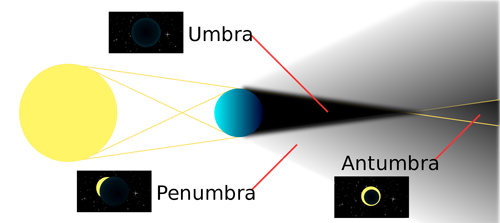A reader writes:
I was flying at night from Chicago, IL to Cleveland, OH. It was a very cool but humid night. Since this was a short flight (1:10) we were in a fairly low altitude commuter jet. There are a lot of small towns between the cities separated by nothing much. It was a clear night and we were of course well above the sparse clouds. They were sparse, that is, until we flew over a town; a short way into the town a low overcast began.
Looking down on it, you could see the street and street lights as you began to cross the town, and the thickening, low-lying overcast, enough to obscure everything, until you reached the town edge, after which it thinned out and disappeared shortly before you reached the actual edge of the town, if you see what I mean. If the town was a disc, the overcast would be a somewhat smaller diameter disc centered and overlaying it.
We also flew over several football fields with their field lights on. By the lights, there was a cloud. Away from them, say by the middle of the field, the cloud stopped.
It was weird and after making this hop more times than I can count I've never seen it before. I'm sure it was a function of the cool temperatures (low 40s), high humidity and the local warming from the lights and from the cities themselves. But I can't think of a mechanism.
Mike
Clouds often form over towns, as a side-effect of the urban heat island effect.
Towns are usually warmer than the surrounding countryside, because we make our towns out of substances like brick and asphalt, which absorb and retain solar heat better than grass and trees. Because the towns are warmer, the air above them tends to be warmer and thus less dense than the air around the town. So the air over the town rises, and air around the town is sucked in to replace it, whereupon that air warms up and rises too. It's sort of like the fire-bombing of Dresden except, you know, less horrifying.
(The urban heat island effect is a favourite of climate-change deniers, who allege that rising temperature readings over the years are explained by those readings being taken in places which genuinely are getting hotter, but only because they contain more and more buildings and roads. These higher temperatures do not, the argument goes, therefore indicate any actual overall climate change. The claim that the world's climatologists wouldn't have noticed and compensated for this phenomenon is, to my mind, about as plausible as the creationist allegation that paleontologists don't know that carbon dating doesn't work on things that are millions of years old.)
The warm air rising over a town will cool down as it rises and mixes with the rest of the atmosphere, and the cooler air is, the less water vapour it can hold. If the air over the town was humid - which it often is over Chicago and Cleveland, since they're each on the shore of a huge lake - then clouds will form as the rising air cools and water condenses out.
I think the particularly striking effect you saw was the result of the local weather being just right to give a textbook demonstration of the heat-island-clouds effect, even around small heat sources like floodlights.
Pollution from towns may also encourage cloud formation, because soot and other particulates can serve as nuclei for atmospheric water vapour to condense onto. This phenomenon is used in agriculture to prevent the formation of frost; oil-fired "smudge pots" burning with a nice dirty smoky flame don't actually greatly warm the orchards they're sitting in, but they do produce lots of nice little particles for water to condense onto, and then drift away. This reduces the amount of water that condenses on the trees and, later, freezes.
Making clouds in this way is quite easy; making rain in some particular place is a lot harder.
(Note, by the way, that clouds are not made of water vapour. Water vapour is a gas, and invisible. The clouds you see in the sky, and the visible "steam" from your kettle, are tiny particles of liquid water. This also means that visible "steam" at normal atmospheric pressure can't be any hotter than 100°C. True, invisible, steam can be much, much hotter than this. You can get a nasty burn from the visible "steam" that appears some distance from, say, an open stopcock on the side of an old locomotive, especially if you're close enough to the nozzle that there's still some actual vapour in there. But the invisible "live steam" closer to the nozzle can, quite literally, flay the flesh from your bones.)
Psycho Science, as I have brilliantly decided to call it, is a new regular feature here. Ask me your science questions, and I'll answer them. Probably.
And then commenters will, I hope, correct at least the most obvious flaws in my answer.
